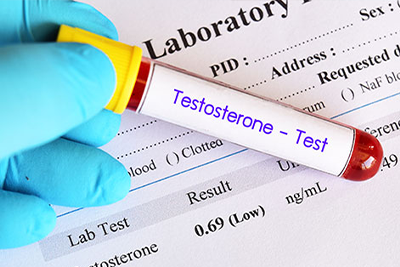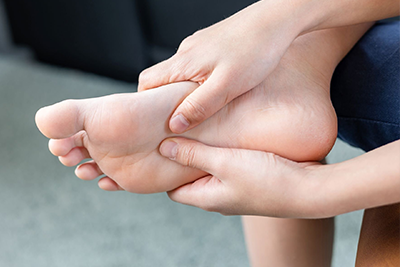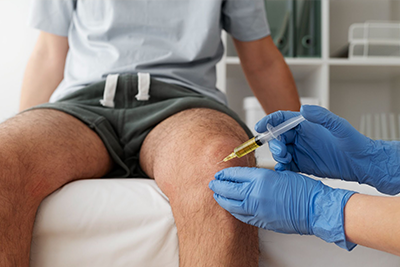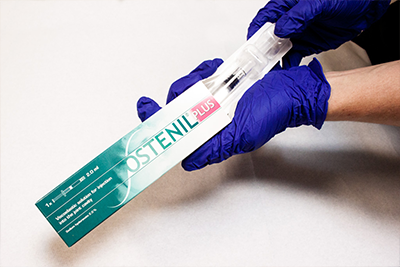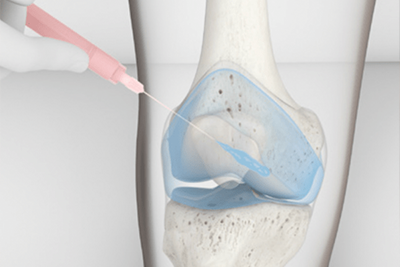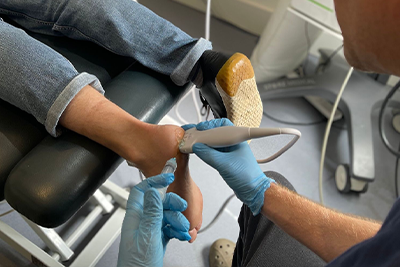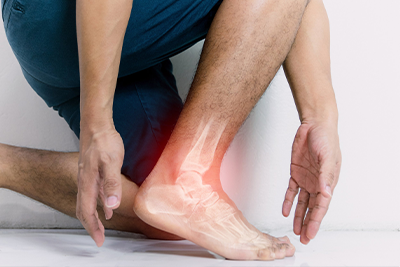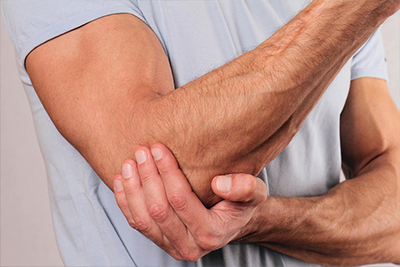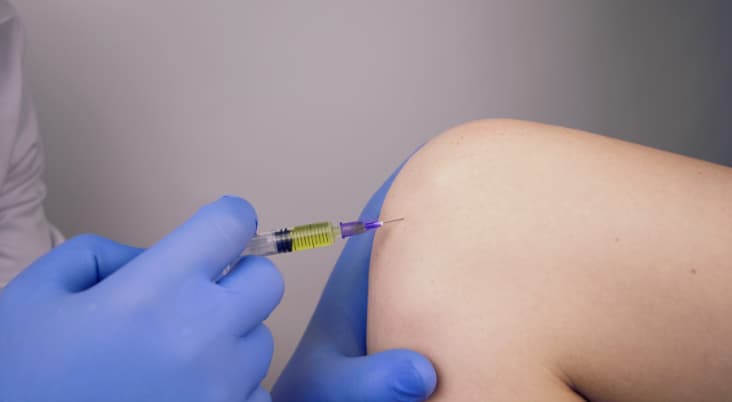Tendonitis is a condition that affects people from all walks of life and depending on the severity, treatment can range from home remedies to the more drastic option of a surgical procedure. This article highlights the physical effects of tendonitis and the increasing popularity of shockwave therapy as a proven treatment that aids people in the recovery process.
Deconstructing Tendonitis
The term “Itis” is derived from Latin origin, which means disease or inflammation. A basic review of human anatomy reveals that the muscles in our bodies are intricately connected to bones by way of strong tendons. Tendons (comprised of fibrous cords of collagen) are what enable us to exert mechanical force in conjunction with muscle and bone, thereby contributing to our ability to engage in physical movement.
There are approximately 1,320 tendons in the human body, and they come in a variety of different shapes and sizes. However, despite the many tendons that comprise our skeletal structure, there are some parts of the human body that become compromised when damage to tendons cause mild to severe levels of pain or inflammation to occur.
Once discomfort in affected areas is persistent over time, there’s the potential that tendonitis has developed. Suffering from this condition can lead to unbearable pain that directly impacts a person’s physical mobility. A concise definition of tendonitis is illustrated by News Medical Life Sciences, which states that “Tendonitis” refers to inflammation of the tendon. Inflammation represents a natural response of the human body to injury or disease, often causing swelling, pain, or irritation.”
Understanding the causes of tendonitis is an important first step for anyone who has experienced or is susceptible to this debilitating condition.
Causes of Tendonitis
Tendonitis is primarily caused by overuse movements, which is the result of engaging affected parts of the body in repetitive motion or a sudden exerted force.
Examples of how tendonitis occurs include the repetitive motion of swinging a tennis racket, golf club and cricket bat, throwing and pitching movements, sports that involve running, jumping or leaping, and jobs requiring long hours at a computer keyboard. To illustrate the impact of the above examples, the online site, HealthHype, states that “The most common causes of tendonitis are due to repetitive stress injuries. This is where the same movement is done repetitively, which strains the tendon.”
Types of Tendonitis and their Symptoms
As with any physically debilitating condition, it is important to be mindful of symptoms that can aid a medical professional in correctly confirming a proper diagnosis. This is vital, given that tendonitis involves recognising specific types pain, swelling, and inflammation. According to online site, Health Communities, there are different types of tendonitis, each of which can lead to a range of discomfort due to repetitive overuse. Below is an in-depth description of each of these types:
- Achilles tendonitis (occurs in the Achilles tendon or “heel cord” in the foot, affecting jumping, walking, jogging, and standing on the toes)
- Adductor tendonitis (affects the inner thigh, hip, and groin area; common in athletes)
- Biceps tendonitis (involves the tendons that connect biceps muscles to the shoulder; often occurs when the arms are repeatedly lifted above the head)
- Golfer’s elbow (affects the inside of the elbow, forearm, and wrist)
- Patellar tendonitis (also called jumper’s knee; affects the tendon that connects the kneecap to the shinbone and is common in athletes who play basketball, volleyball, and soccer)
- Posterior tibial tendon dysfunction (PTTD or adult-acquired flatfoot; occurs in the foot when the tendon cannot support the arch)
- Rotator cuff tendonitis (affects the rotator cuff, which are tendons that attach four muscles that help the shoulder joint move)
- Tennis elbow (affects the outside of the elbow and sometimes, the outside of the forearm and wrist)
- Trigger finger (results from irritation of the covering surrounding a tendon [sheath] in a finger; may cause the finger to remain bent or straighten without warning)
- Wrist tendonitis (e.g., de Quervain’s tenosynovitis; results from irritation of the sheaths of the tendons on the thumb side of the wrist, causing moving the wrist and grasping things to become very painful)
If symptoms associated with any of the above types of tendonitis are ignored, these conditions can get progressively worse and may result in a long-term injury that prolongs efforts for recovery. Being cognisant of the symptoms of tendonitis and when they occur are critical factors that can influence a path to appropriate treatment.
In explaining how symptoms of tendonitis can vary depending on the level of severity, the online site, Tendonitis Types,addresses the following issues associated with tendonitis symptoms:
- Strong pulling
- Sharp pain when moving a joint
- Sharp pain when lifting or carrying anything
- A deep ache
- Drawing sensation that seems to follow a straight line through the muscle into the tendon
- Ache or pain and stiffness to the local area of the tendon
- Burning sensation that will surround the whole joint and around the inflamed tendon
- Pain and swelling, stiffness after exercise
- Pain if you try to lie on your side at night
The above symptoms associated with tendonitis can give sufferers some insight into knowing how to isolate where pain occurs and also factor in whether their condition is self-treatable or may require medical intervention. Clearly, taking a proactive stance on treating tendonitis begins with identifying symptoms that cause inflammation and pain so that a treatment protocol can be administered.
Traditional Treatment Options for Tendonitis
Treatment for tendonitis involves employing traditional remedies that have been long regarded as effective options for recovery. According the Cleveland Clinic, treatment recommendations for tendonitis has usually included:
- Avoiding activities that aggravate the problem.
- Resting the injured area.
- Icing the area the day of the injury.
- Taking over-the-counter anti-inflammatory medicines.
- Corticosteroid injections to decrease inflammation and pain
- Physical therapy: This can be very beneficial, especially for a frozen shoulder. Physical therapy includes range of motion exercises and splinting (thumb, forearm, hands).
- Surgery: This is rarely needed and only for severe problems that do not respond to other treatments.
While the above options for treating tendonitis are integrated as part of the recovery process, the growing influence of shockwave therapy is making its mark as a proven and increasingly popular method for treating a variety of tendonitis conditions.
The Science Behind Shockwave Therapy
Shockwave therapy (also called Extracorporeal Shock Wave Therapy or ESWT) has now become a standard option for treating patients with chronic and painful tendonitis.
In explaining how ESWT works, online source “PnysioScience” states the following:
“Extracorporeal Shockwave Therapy (ESWT) is a minimally invasive procedure where shock waves are passed through the skin to the injured part of the body. It is mainly used for tendon or plantar fascia injuries, although it is also useful for some types of muscle injuries.”
Additionally, PhysioScience also explains other important factors of ESWT in confirming that “Extracorporeal means outside of the body. The shockwaves are mechanical and not electric. They are audible, low-energy soundwaves, which work by increasing blood flow to the injured area. This speeds-up your body’s healing process.”
The science on how shockwave therapy works suggests that alleviation of inflammation and pain caused by tendonitis is possible, given the therapeutic nature of this technology. In fact, shockwave therapy has become so prevalent that the online site PhysioCare, states that “The effectiveness of the treatment modality for specific conditions has however been reviewed accepted by both NICE (UK National Institute for Health and Clinical Excellence) and FDA (US Food and Drug Administration).”
Given the recognition of shockwave therapy by two major oversight organisations such as NICE and the FDA, patients can feel confident in knowing that shockwave therapy is a safe, non-invasive procedure that can dramatically shift their tendonitis condition from painful to one where they feel physically pain free. A trained and qualified physiotherapist or sports medicine professional with experience using ESWT can help guide patients with tendonitis on the right path to treatment and recovery.
Shockwave Therapy Procedure
The procedure of applying shockwave therapy is an easy, non-invasive process and according to the online site, Shockwave Therapy, involves the following three steps:
- 1st Step: Location of the area to be treated: The area to be treated is located using palpation in order to deliver the therapy precisely.
- 2nd Step: Gel Application: Sufficient amount of gel is applied to the area located in step 1. Use of gel is necessary to transfer the acoustic waves efficiently and smoothly.
- 3rd Step: Therapy Initiation: The Shockwave applicator is slightly pushed against the area to be treated and the start button is pressed.
Benefits of Shockwave Therapy
Shockwave therapy has received favourable attention because it can be used as a stand-alone procedure for tendonitis or in conjunction with other treatment modalities.
According to Soft Tissue Solutions, the benefits of shockwave therapy include the following:
- Can be used without x-rays or drugs (although the diagnostic process and/or previous treatments may have included these)
- Stimulates the body’s own healing ability
- Often provides an immediate reduction of pain as well as improved mobility and function
- Is non-invasive
As a potential alternative to surgery, shockwave therapy clearly has some impressive benefits that sufferers of tendonitis can include as a treatment regimen.
Shockwave Therapy is a Viable Alternative for Tendonitis
Receiving a tendonitis diagnosis from a medical physician can be best thing sufferers of this condition can do, as you get a sense of the severity of the pain being experienced, whether self-treatment options are the best way to go or if surgery is a possibility. It is also beneficial to seek a consultation with a physiotherapist or sports medicine specialist to see if shockwave therapy can help resolve your tendonitis condition. Tendonitis doesn’t have to be a condition that affects people’s quality of life and shockwave therapy certainly offers an alternative vehicle of receiving treatment as part of a plan for full recovery.
Related Articles
- How Does Shockwave Therapy Work on Tendons
- Can Shockwave Therapy Help With Musculoskeletal Problems
- Shockwave Therapy FAQs
- Does Shockwave Therapy Really Work for Calcific Tendonitis?
- Treatment of Plantar Fasciitis using Shockwave Therapy


